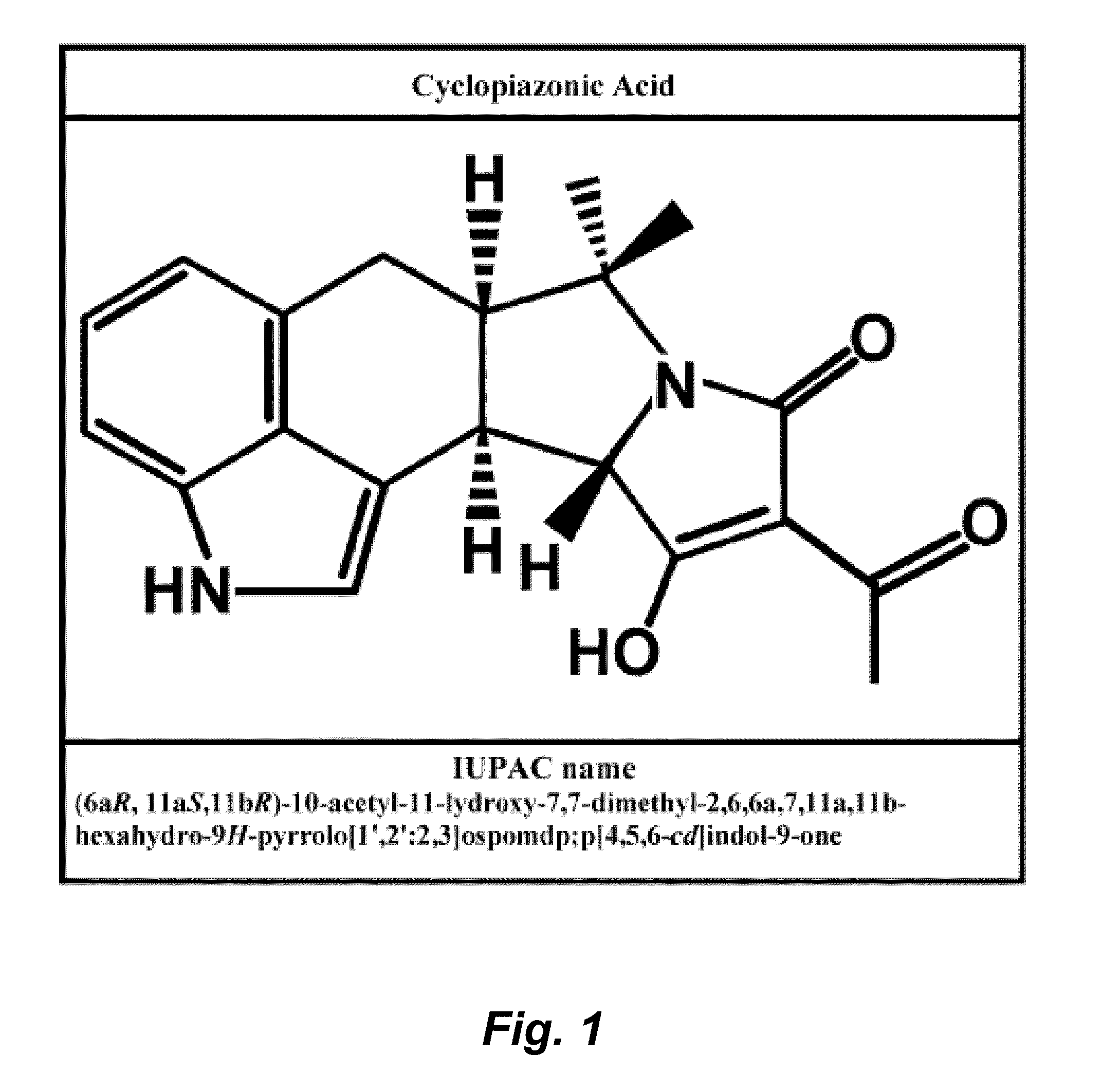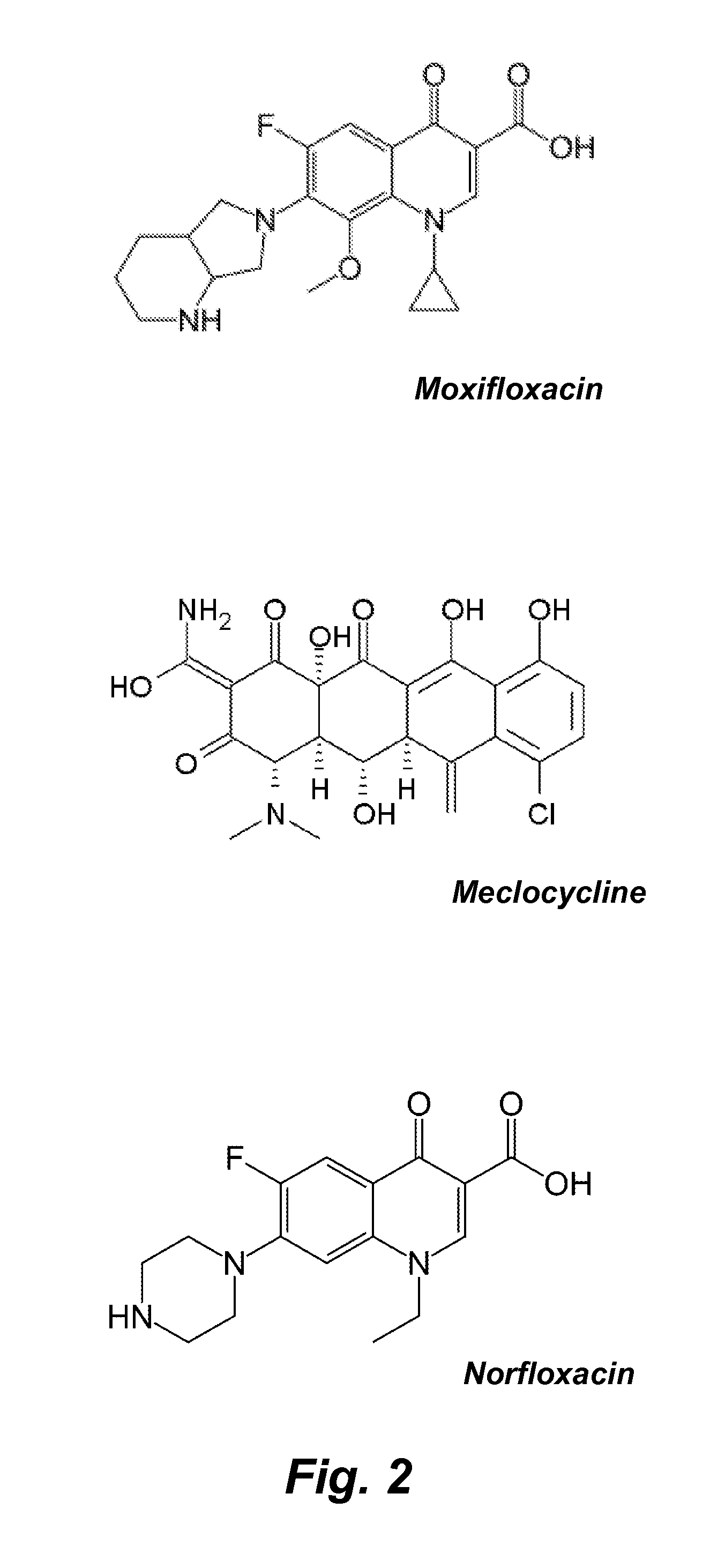Radioprotective drugs
a technology of radioprotective drugs and drugs, applied in the field of drugs, can solve the problems of inability to tolerate food or fluids, inability to absorb food or fluids, and damage to the dna base by radiation
- Summary
- Abstract
- Description
- Claims
- Application Information
AI Technical Summary
Benefits of technology
Problems solved by technology
Method used
Image
Examples
example 1
[0144]Dose-responses of irradiated cells treated with cyclopiazonic acid (CPA) were determined. A cell viability assay with TiL1 cells was measured using ATPlite reagent 24 hours after irradiation with 2Gy. CPA was added to the cells 3 h before irradiation for protection (FIG. 3A), or 1 hour after irradiation mitigation (FIG. 3B) activities. The percent cell viability plotted was normalized to vehicle control value. As shown in FIGS. 3A and 3B CPA both protects and mitigates TiL1 cell from radiation damage.
[0145]The effect of CPA on animal survival against a lethal dose total body irradiation was determined. Two oral administrations of CPA at 24 h and 1 h prior to irradiation at 8 Gy protected mice from radiation-induced death (FIG. 4A). This effect was most prominent with CPA treatment at 6 mg / kg showing 89% survival while only 17% of controls survived.
[0146]CPA at 6 mg / kg or vehicle control was administered twice prior to irradiation as described above along with un-irradiated con...
PUM
| Property | Measurement | Unit |
|---|---|---|
| pKa | aaaaa | aaaaa |
| concentration | aaaaa | aaaaa |
| concentration | aaaaa | aaaaa |
Abstract
Description
Claims
Application Information
 Login to View More
Login to View More - R&D
- Intellectual Property
- Life Sciences
- Materials
- Tech Scout
- Unparalleled Data Quality
- Higher Quality Content
- 60% Fewer Hallucinations
Browse by: Latest US Patents, China's latest patents, Technical Efficacy Thesaurus, Application Domain, Technology Topic, Popular Technical Reports.
© 2025 PatSnap. All rights reserved.Legal|Privacy policy|Modern Slavery Act Transparency Statement|Sitemap|About US| Contact US: help@patsnap.com



